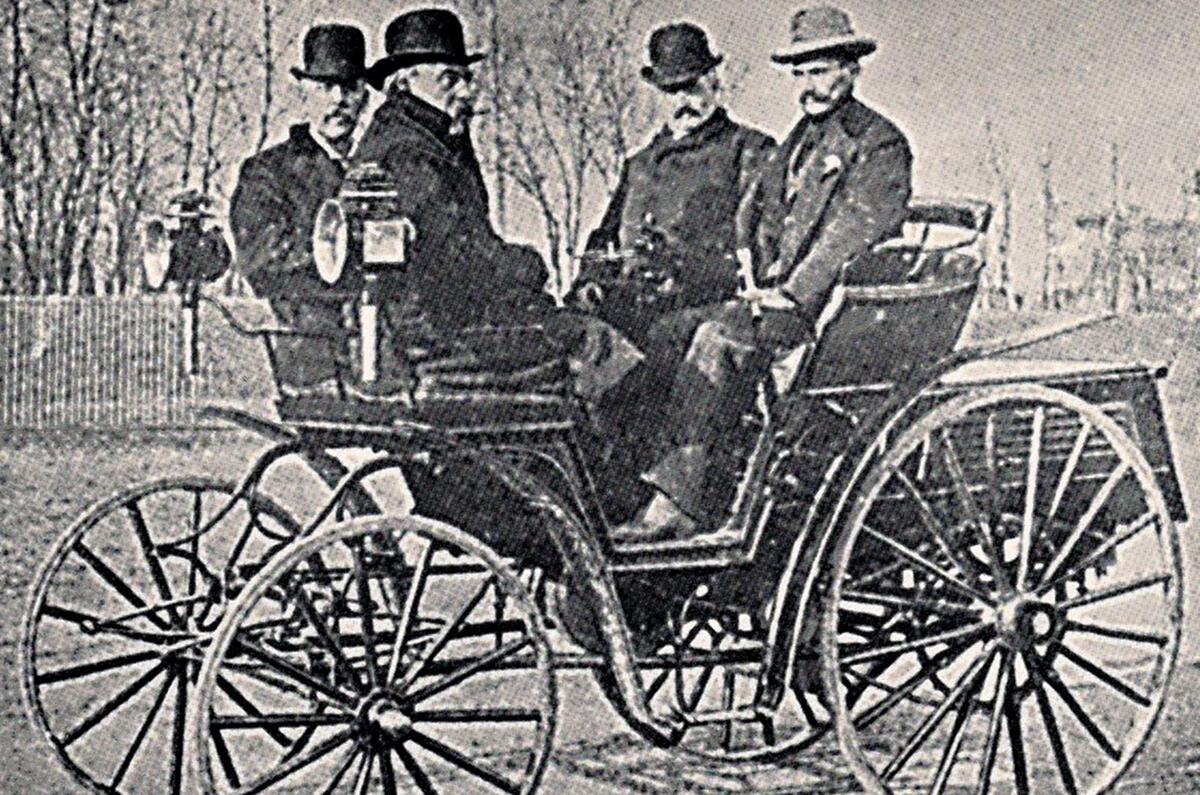Out of the melting pot of early automotive development came various attempts to prove the potential of this emerging breed of self-propelled carriages by racing them against each other.
One of the earliest races in the US was sponsored by the Chicago Times-Herald to the tune of $5000. It drew plenty of interest but also highlighted the shortage of automobiles fit for the task.
The race was fixed for 2 November 1895 and attracted close on 100 entries, but, as Autocar put it, “in nearly every case the machines were designed and intended to be constructed specially for the contest [and] the time allowed was not sufficient. On the date named, two carriages only were ready, the others asking for an extension of time”.
The Chicago Times-Herald offered $500 for the two cars to go over the 94-mile course. That duel was won by a vehicle entered by H Müller and Co of Decatur, Illinois. The car completed the route in 8hr 44min. The other car, entered by the Duryea Motor Waggon Company of Springfield, Massachusetts, was disabled by an accident en route.
When the day of the rescheduled main race rolled around, “the weather was most unfavourable, four inches of snow and mud being on the ground”.
Of the 31 machines that were now ready, only six decided to face the conditions, the rest declining “even though the course was confined to the immediate neighbourhood of Chicago and had been reduced to 54 miles”.
The six that appeared at the start in Jackson Park included the entries from Müller and Duryea, as well as two other petrol-powered cars from the De La Vergne Refrigerating Machine Company and RH Macy Company, both of New York. Two electric-powered machines were entered, one by Morris and Salom of Philadelphia, the other by Sturges Electric Motocycle of Chicago.
“Thousands were waiting at Jackson Park and Midway Plaisance at 8.30am to watch gasoline engines pitted against electric motors,” wrote Autocar. “The owners of the electric cars did not start out with the idea of winning the race. They were unable to arrange for supply stations at different places along the route, and consequently could not get enough power to run over the route. But they intended to show that their electric vehicles could travel under all conditions as well as the petrol-powered machines.”
That left four realistic contenders, who were due to leave the start line at staggered intervals, with each one being accompanied by an umpire. But it wasn’t plain sailing. The Müller car broke down on its way to the start and set off an hour late. The De Le Vergne car started on time but had traction issues in the snow. “The driver, Frederick C Haas, decided he would not attempt to race and the wagon was shoved over the deep snow to a better part of the road,” wrote Autocar.





Add your comment